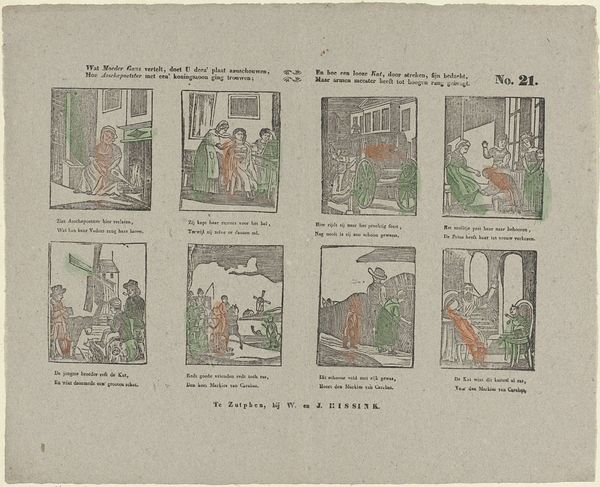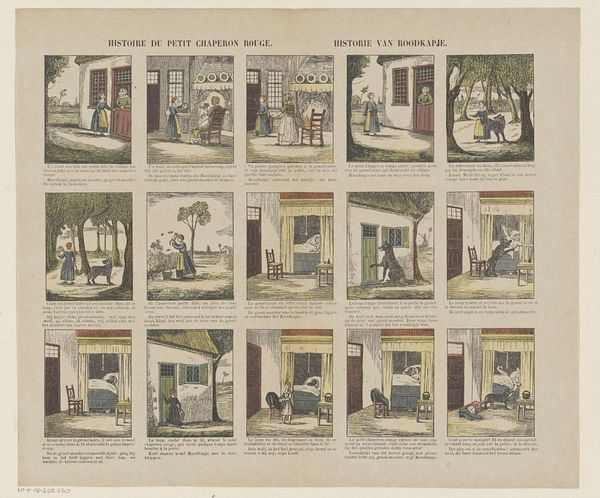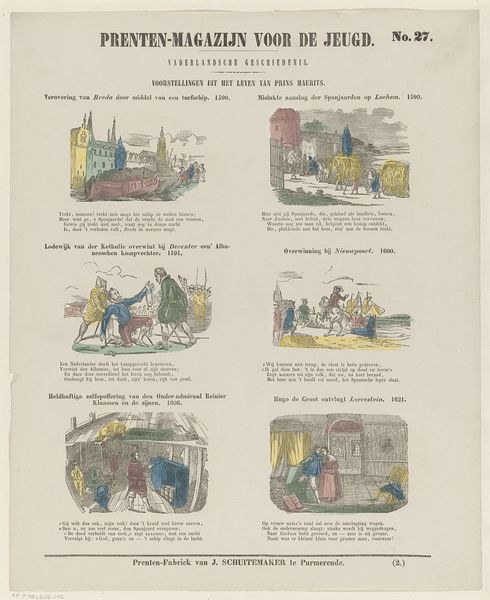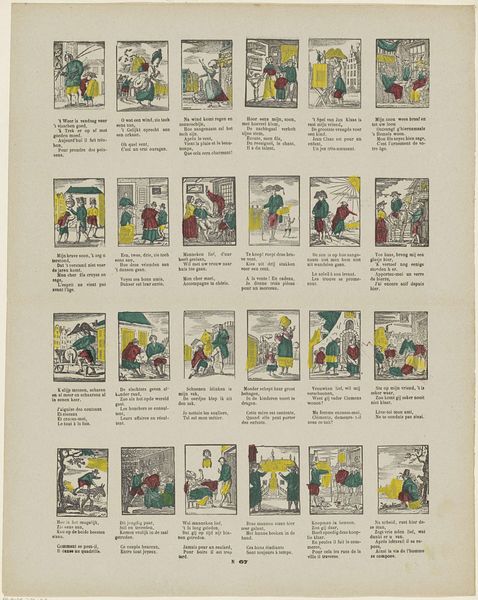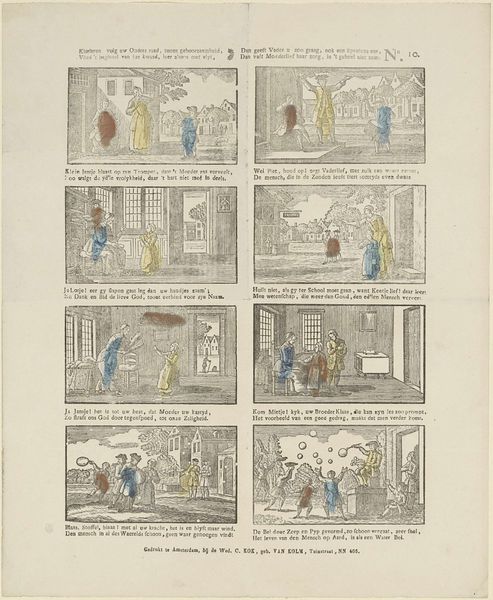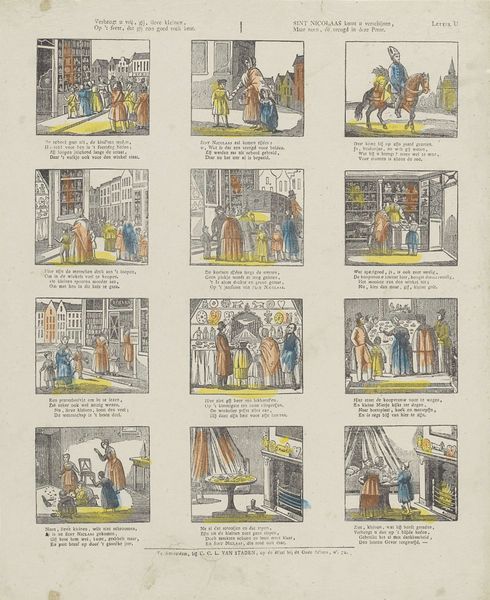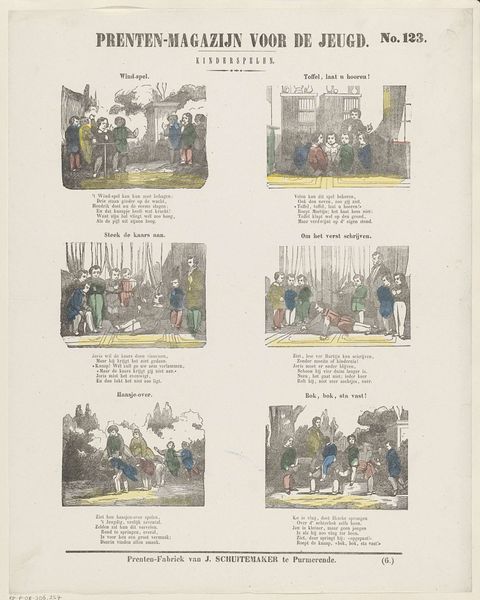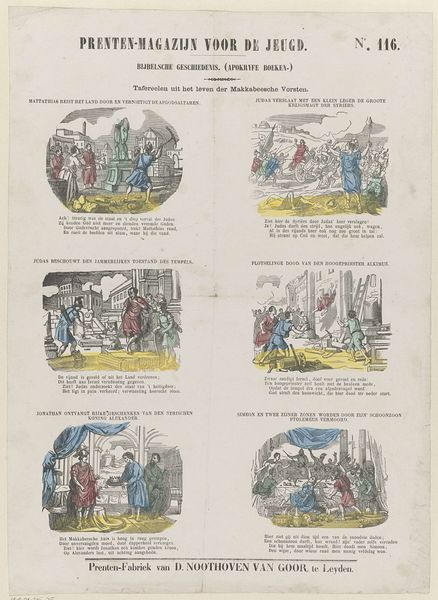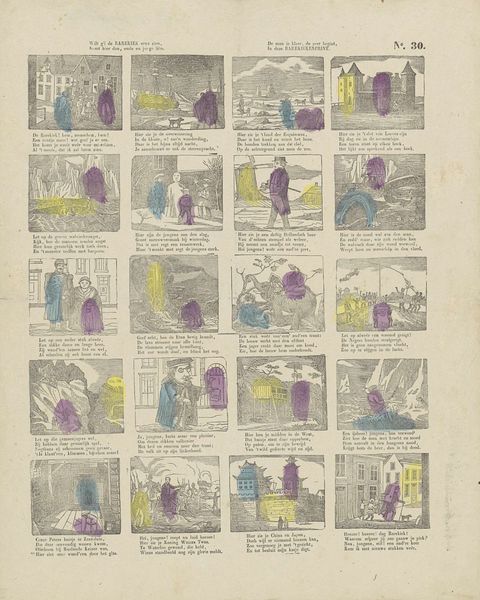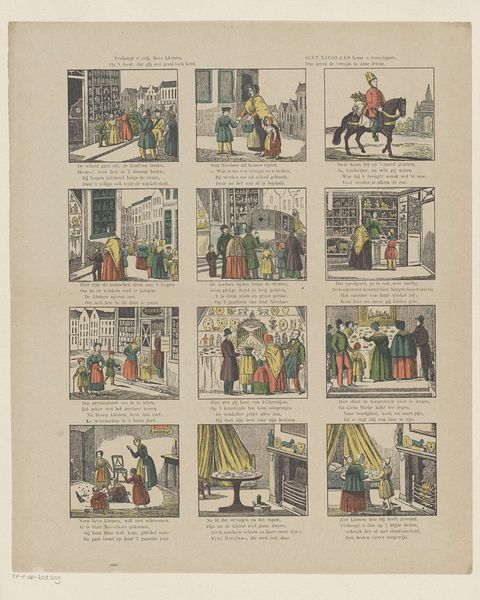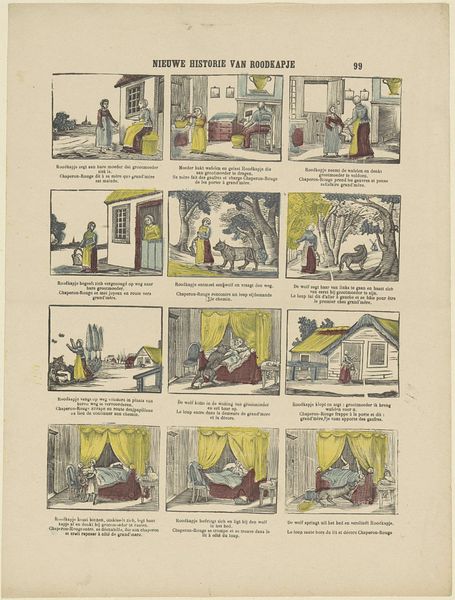
mixed-media, print
#
mixed-media
#
narrative-art
#
dutch-golden-age
# print
#
genre-painting
Dimensions: height 315 mm, width 394 mm
Copyright: Rijks Museum: Open Domain
Curator: Here we have an intriguing print from the Dutch Golden Age, its creation attributed to P.C.L. van Staden & Co. The work, entitled "Ziet hier ô kinderen afgebeeld het volgende, als:", dates somewhere between 1850 and 1870. It’s a mixed-media piece, currently residing in the Rijksmuseum. Editor: It feels like a strange board game! Or maybe one of those "spot the differences" challenges in a children's magazine. The rigid, square composition makes the narrative elements seem almost secondary to the grid structure itself. Curator: Yes, the formal composition certainly structures our viewing experience. The rigid organization highlights twelve different narrative scenes, a design element reminiscent of early comic strips. Note how each little tableau is framed, isolating the figures and their actions. Semiotically, this repetition underscores a systematized reading, guiding us to interpret the artwork section by section. Editor: Absolutely. But what draws me in is the materiality itself—look at the etched lines and crosshatching used to create shading and form. These are not mere visual details; they speak to the laborious, almost mechanical production of print media during that era, transforming images into multiples, to disseminate ideas. One must consider not just what is shown but how it's reproduced for distribution. Curator: Indeed. Consider also the symbolic dimension: each individual scene may signify commonplace morals from the Dutch context during this period, each a vignette encapsulating simple lessons and societal customs. This echoes how morality can be imparted systematically, much like the production of prints such as these. Editor: And I love thinking about this artwork outside museum contexts. Considering how accessible these would be compared to paintings displayed at homes, maybe children used to look at them while workers at the P.C.L. van Staden & Co. used a printing press to create social change and spread knowledge. It democratizes the art world back then. Curator: An enlightening connection between material process and pedagogical function. It makes one question what it means to engage with art that's both rigidly structured and designed for accessibility. Editor: Definitely. Analyzing production value adds another valuable layer. It’s always a reminder that artworks are first crafted—only later they became an artistic creation.
Comments
No comments
Be the first to comment and join the conversation on the ultimate creative platform.


